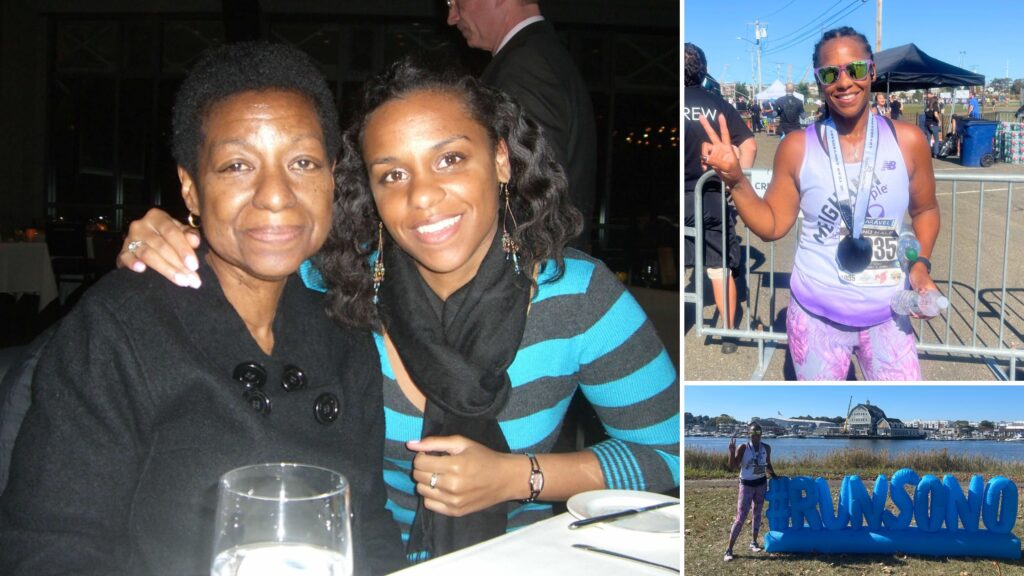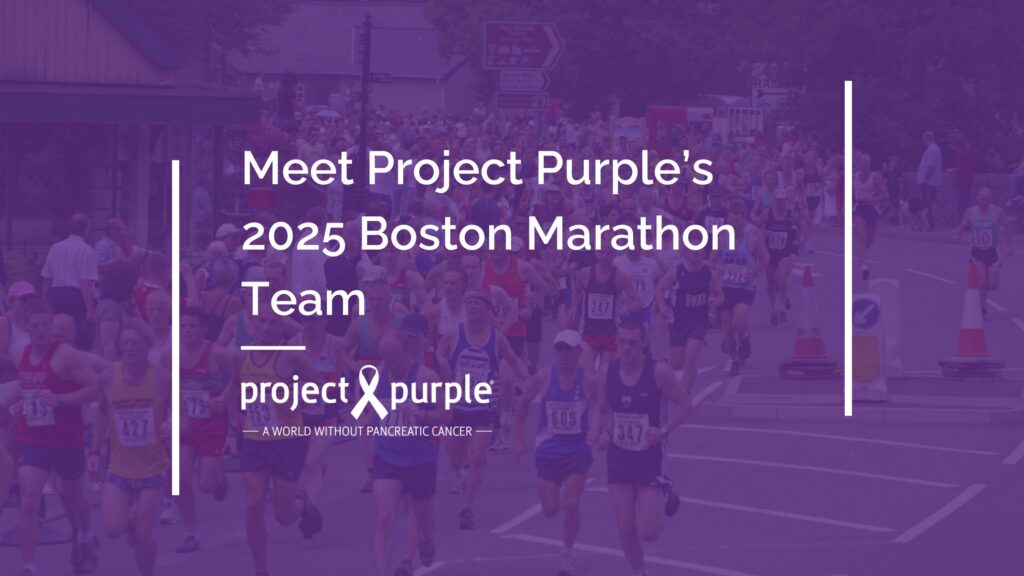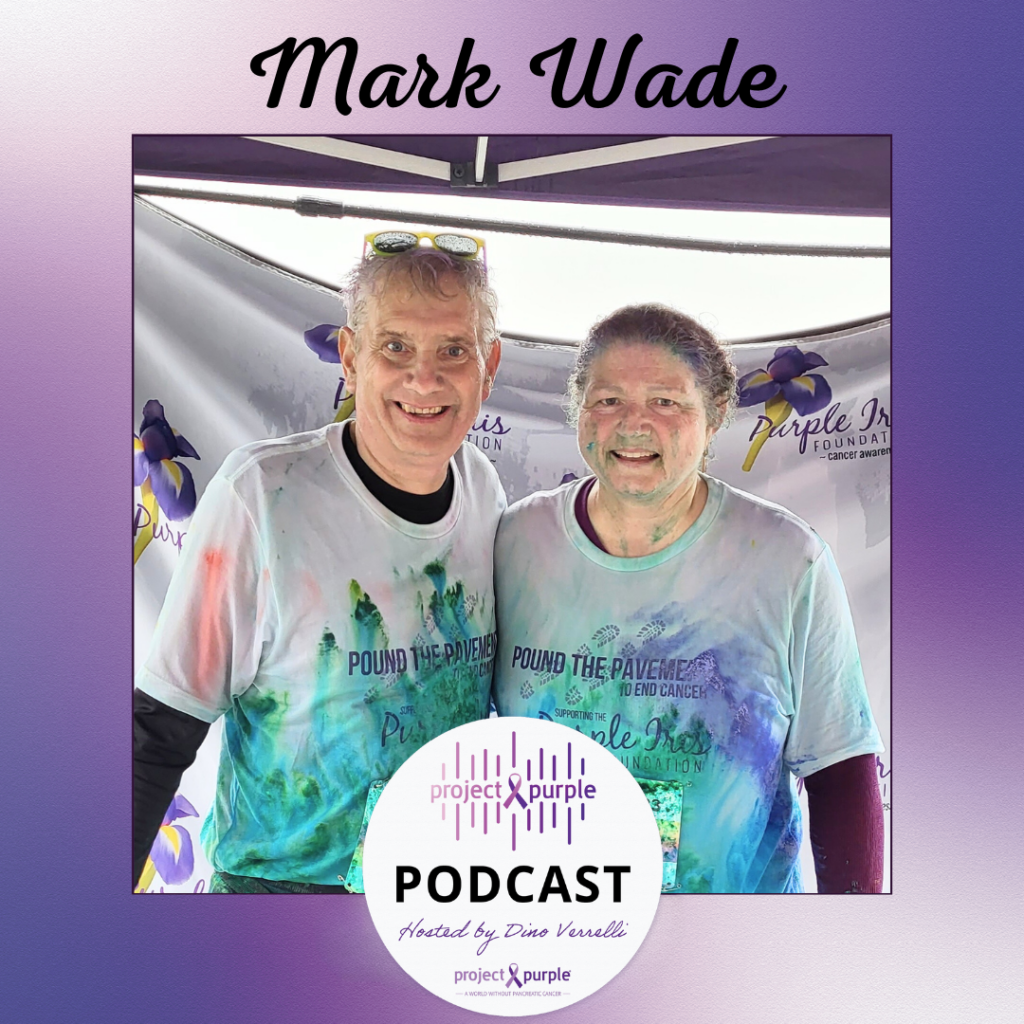Often times, when a marriage ends in divorce, former family members and in-laws cease to communicate. When Barry Morrill’s marriage ended, however, he maintained a close relationship with his ex-wife’s parents, Bill and Norma Lyons. When Bill Lyons lost his life to pancreatic cancer in 2013, it was a devastating blow to everyone who knew him, including Barry. Almost immediately, Barry began looking for ways to raise awareness for pancreatic cancer. He is now preparing to honor father-in-law’s memory by walking and running the LA Marathon with the Project Purple Pioneer Program.
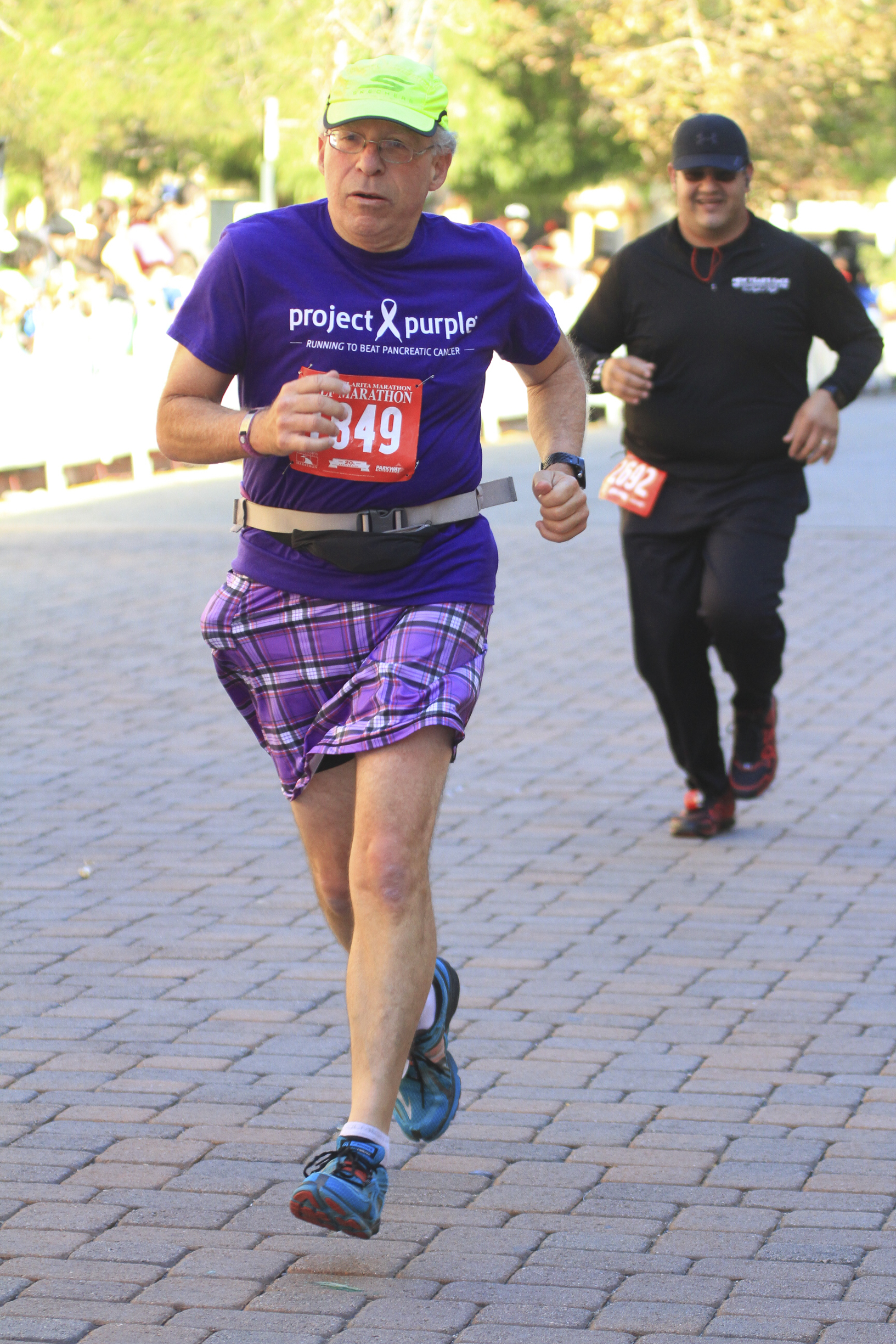
In October, 2012, Bill began experiencing abdominal pains. Testing quickly revealed the cause of his discomfort: stage IV pancreatic cancer. “At first I thought of pancreatic cancer as just another form of cancer. I thought that he would go through chemotherapy and that his life would change, but I believed that life would still go on,” Barry explains. “Bill seemed to be doing so well. But after two months, you could tell the finality of his illness and it was just horrible. It was heart-wrenching to see him change so fast. I felt helpless.”
“In his final months, Bill spent time on his property in the desert. He spent time with family & friends. He still took care of people who needed help. He really lived during those last few months until hospice started,” Barry remembers. Bill Lyons passed away in March, 2013, just months after his initial diagnosis.
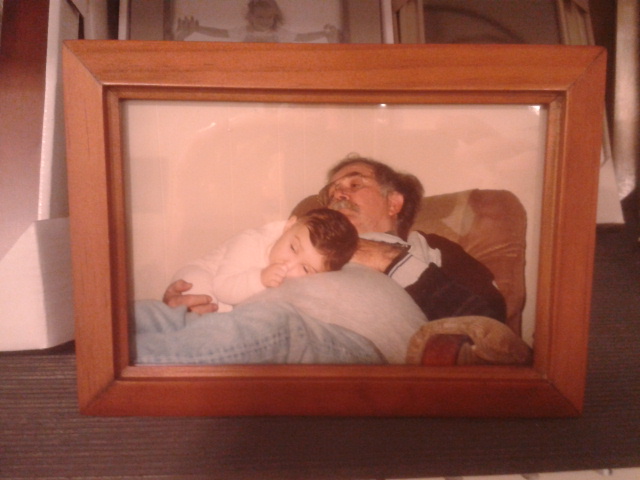
Barry was deeply affected by the loss of a man he considered a father figure. He knew that he wanted to bring attention to the illness which took Bill from his loved ones. He turned to an activity that he had enjoyed as a child to make a difference for others who have been affected by pancreatic cancer. When Barry Morrill was a teenager, he sometimes drove his parents crazy by disappearing for hours at time. Barry was not getting into teenage mischief, however. He simply loved to go for long walks, sometimes covering 15 miles in a day. Barry, a California native, recalls, “I was a comic book geek. One of the longest walks I took was from Venice to Hollywood to go to a comic store. I loved to walk. On Saturdays, I would leave for a walk at 9 am and call my parents from 15 miles away for a ride home.”
As Barry grew into adulthood and all of the responsibilities that come along with it, he got away from exercise. However, five years ago, Barry visited his physician and got a rude awakening. He was diagnosed with non-alcoholic fatty liver. Barry was told that he had a year to lose weight and get into shape. If he did not meet his goals in that time, he would have to go on medication. Barry immediately joined Weight Watchers and found a running group through a local running store. The weight came off and Barry took control over his health.
In February of 2012, Barry ran his first 5k and was instantly hooked on racing. He joined the LA Leggers running group and began training in earnest for more events. When Barry ran his first half-marathon, he finished the race and went to show Bill his medal. When Bill passed away not long afterward, Barry immediately sought out ways to honor his memory.
In 2013, Barry began running in a purple kilt that he refers to as the “cancer-fighting kilt”. It was a gimmick, and a way to get people’s attention, but it worked. Barry recalls, “Two years ago at the Passadena half-marathon, two people ran up and asked what the kilt was for and it turns out that they were research scientists who were studying pancreatic cancer.” The purple kilt gets people’s attention and is a conversation starter. Barry has even met pancreatic cancer survivors because of conversations that started due to his kilt. (Kilts may be purchased at the following link: http://jwalkingdesigns.com/collections/frontpage/products/mad-about-plaid-womens-active-skirt-kilt)
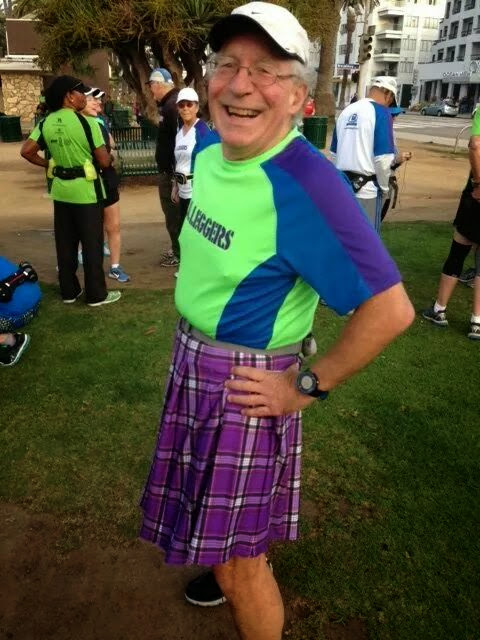
As a single father, Barry frequently trains at 3:30 in the morning. He squeezes in workouts around his daughter’s schedule. He knows that staying active is imperative to his health, so Barry makes exercise a priority in his life. He has become very involved in the LA Leggers running group and currently serves as the club’s Vice President. Barry refers to himself as a “walk/runner”. He alternates running for one minute with walking for three. He also coaches “power walking” two nights per week. Barry teaches people to walk efficiently so that they can conserve energy while racing and have a more fun and enjoyable experience. It is through his connections to the Los Angeles running community that Barry met Julie Weiss, aka the Marathon Goddess. Julie lost her father to pancreatic cancer and has run several major marathons with the Project Purple teams. Their friendship inspired Barry to join forces with Project Purple.
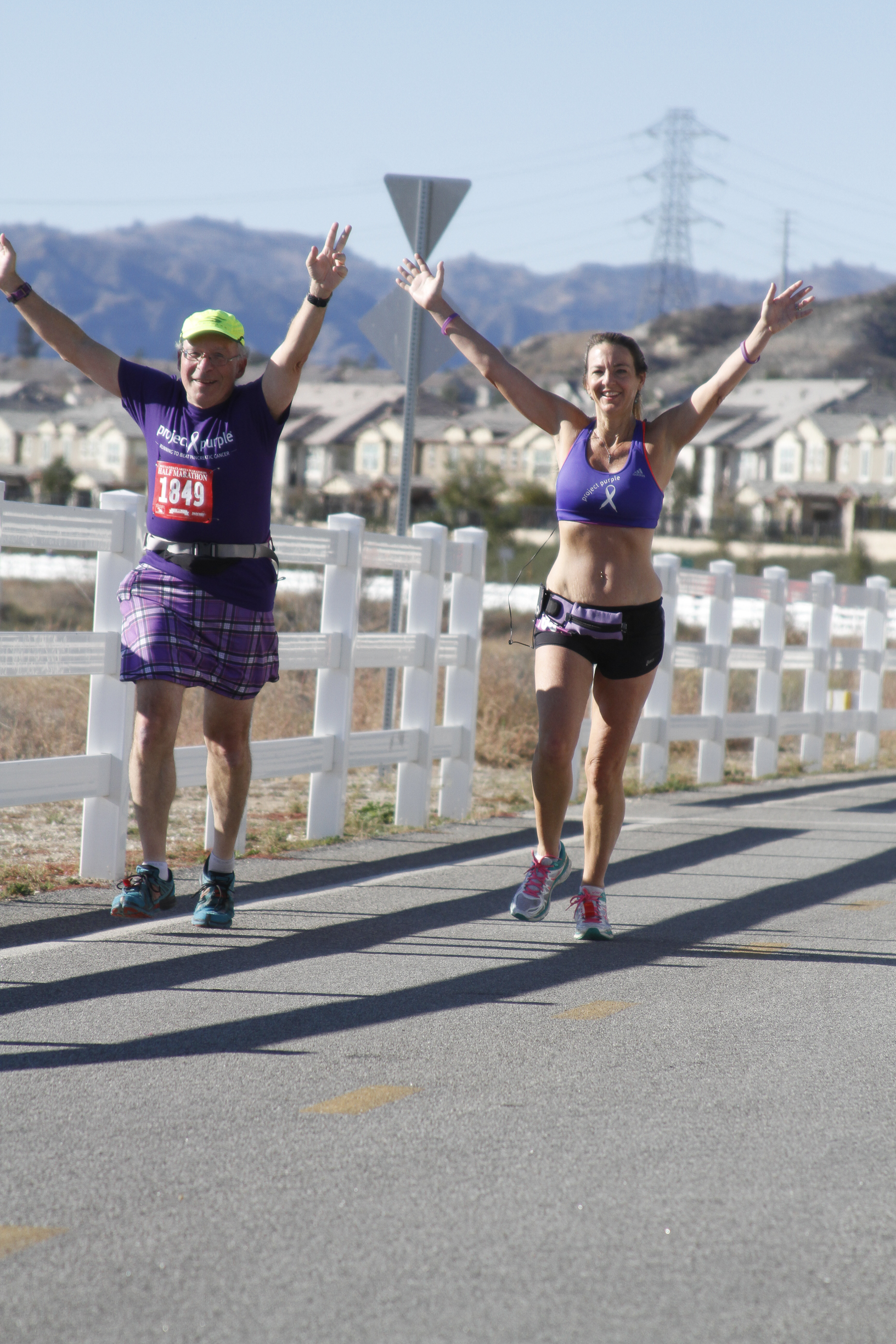
Through Project Purple’s Pioneer Program, Barry has chosen to run/walk the LA Marathon in Bill Lyons’ honor to raise funding for pancreatic cancer. LA will be Barry’s second full marathon distance race. He ran the marathon for the first time in 2013, and it holds special meaning for him. Walking and running have come full-circle in Barry’s life. He loved walking as a child, but took an extended break from it. He rediscovered his love for walking as an adult. Walking has saved Barry’s own physical health and now he hopes that his fundraising efforts will help those affected by pancreatic cancer.
Please make a donation to Barry’s Project Purple fundraising campaign at the following link:
https://www.crowdrise.com/cancerfightingkiltru

